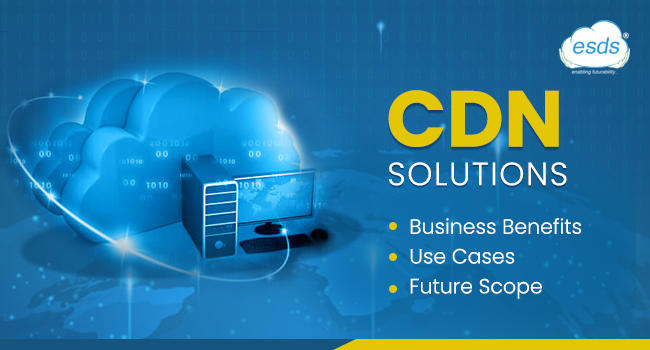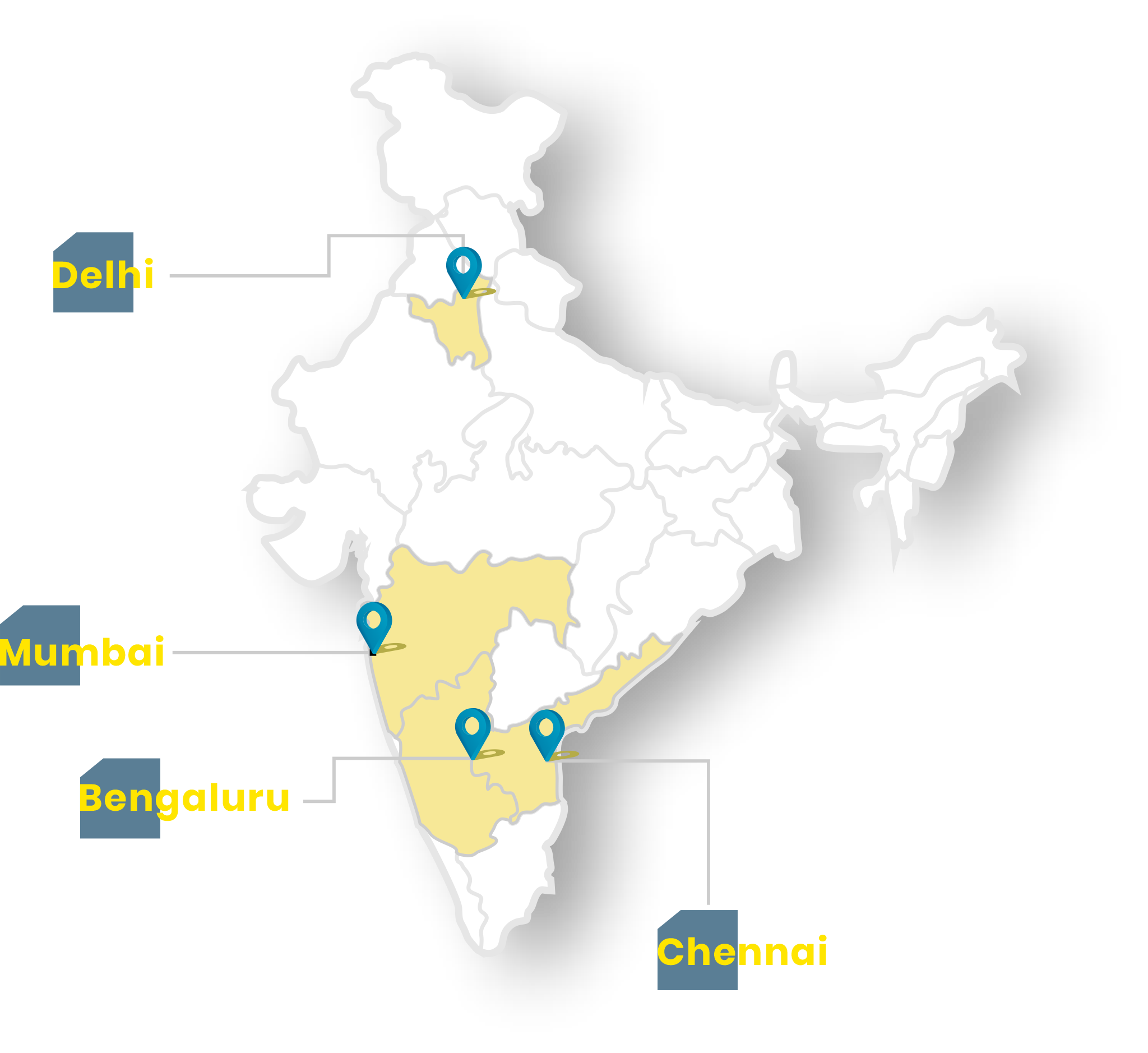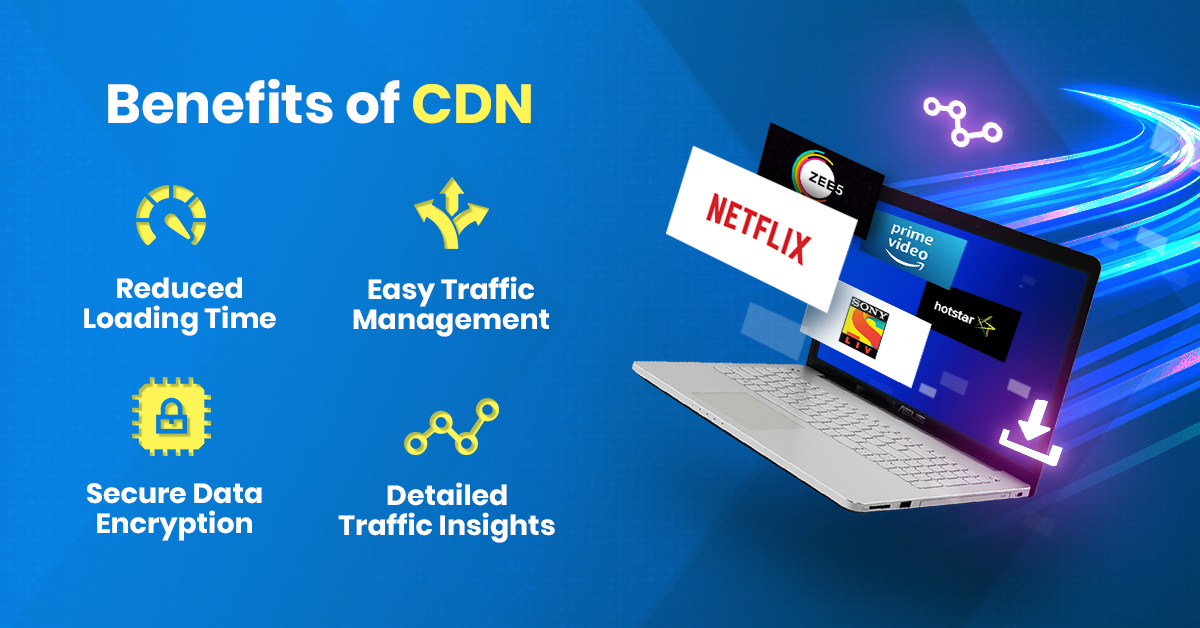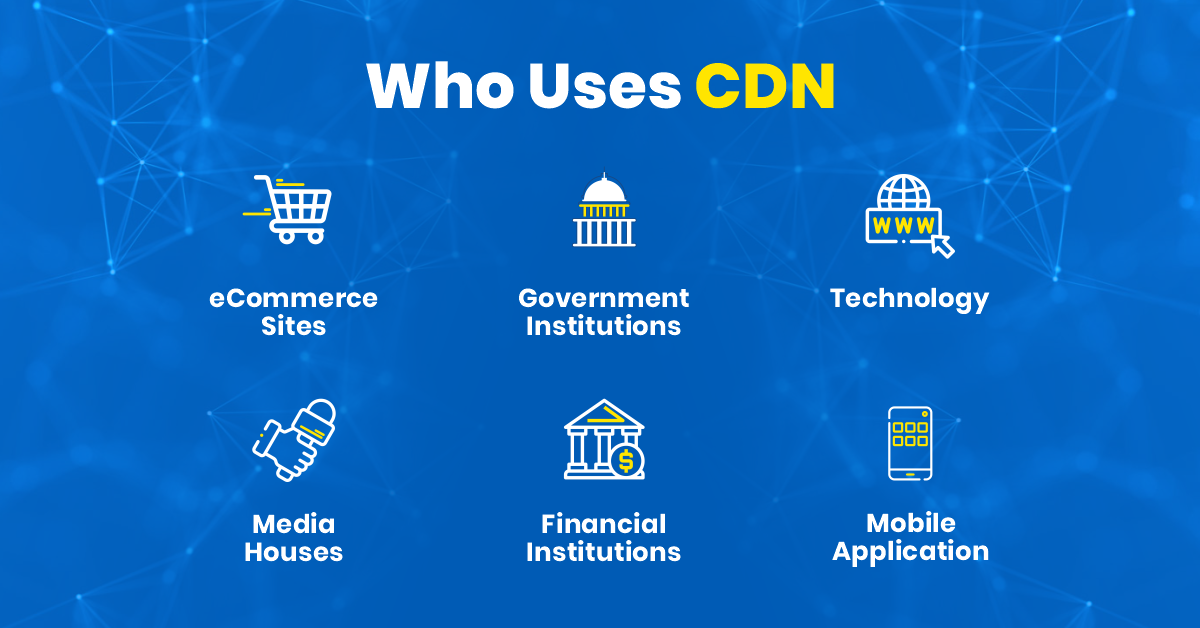CDN Solutions: Business Benefits, Use Cases & Future Scope
Benefits of Content Delivery Networks & Future Scope

In today’s digital and Internet age, websites serve as the first point of contact between an outsider and enterprises. Without having a dedicated website, it becomes quite difficult for organizations to establish trust among the potential end-customers. To drive in customer trust, all businesses, irrespective of their sizes, now have their website. Today, various organizations exist across industries like e-Commerce, video sharing, or OTT who run their businesses through websites only. For such organizations, a Content Delivery Network or CDN solution is necessary.
Defining PoP

A PoP or point of presence defines a physical location where multiple CDN Edge Servers are present. Multiple PoP present at different geographical locations forms the entire CDN network. Also, the number of PoPs of a CDN provider has a direct and huge impact on expanding the global reach. PoPs play an important for storing and caching the static content. The static content can be easily cached as compared to the dynamic content.
Rather than the user placing his request to a distant data center (PoP), he can easily do it with localized PoPs, having a much shorter distance. By feeding requests to the localized PoPs, there is a significant decrease in the RTTs (Round Trip Times), resulting in better performance of applications.

CDN providers like ESDS have deployed their multiple PoPs across India for delivering the fastest & cost-effective CDN Solution to their localized users.
Defining CDN Solutions
A CDN depicts a network of data centers along with proxy servers that are geographically distributed. A CDN solution’s core aim is to offer end-customers with localized servers, known as PoPs (points of presence), to reduce latency and enhance load balancing. Low latency in content delivery in real-time results in an improved and faster user experience. CDN providers like ESDS are playing an important role in the Internet domain by offering enhanced user experience. The advanced technologies adopted and applied by these CDN providers are focused on enhancing customer experience using numerous techniques.
How Do CDNs Benefit Websites and Other Online Platforms?
For any CDN Solution, the ultimate benefit they offer is enhanced user experience by reducing latency in fetching real-time data. Other added benefits of a CDN solution includes

1. Reduced Loading Time and Latency
Geographical locations play an essential role in download speed and latency since the CDN will receive and distribute traffic to the nearest available PoP. Hence, a strong CDN network helps reduce webpage loading time and increases the data transmission rate. Nowadays, CDN providers are also using other methods for faster data transmission. They are using advanced technologies for managing the caching servers. The cached content gets distributed as per demand, making it readily available to the user. CDN providers can also increase the user’s incoming requests’ response speed with the caching content placed closer to the customer.
2. Easy Management During Traffic Surges & Peaks
Some sites and online platforms often witness traffic surges and peaks. During such times, the CDN providers distribute the user requests amongst all the CDN servers to minimize the load. Load balancing of CDN also helps in avoiding crashes and overloading servers.
3. Secure Data Encryption
Encryption methods are constantly evolving. Trusted CDN providers tend to apply the latest SSL certificates and maximum data security methods without hampering their customers’ operations.
4. Detailed Traffic Insights
A CDN provider usually handles nearly half the volume of Internet data traffic, resulting in huge volumes of analytics data being generated. This generated data can then be shared with the end-customers for driving actionable insights. The detailed analysis helps the website developer optimize his site, and in-depth reporting of traffic ultimately results in increased performance and higher user experience.
Who Needs a CDN Solution
Not every website may not require the services of a CDN solution. CDN solutions are of great help for those who have a website or mobile application that multiple users request at a time. CDNs are also used by those websites and mobile applications that serve a large number of geographically spread users with huge volumes of dynamic content.

- eCommerce
With CDN solution, eCommerce sites and applications can deliver content quickly and efficiently, even during heavy traffic times.
- Government
They are large and content-extensive websites that have vital information for citizens that can be quickly delivered using a CDN solution
- Finance
CDN solutions offer financial institutes a fast, secure, and reliable infrastructure for storing user-sensitive data
- Media and Publishing Houses
Media websites need to be timely deliver news along with information, and hence a CDN solution can be used for updating headlines, news sections and also remove data when it gates outdated
- Mobile Applications
CDN solutions can be used for delivering dynamic, location-based content to mobile applications by reducing their loading time and increasing responsiveness
- Technology
CDN solutions help the websites to serve massive traffic requests every day without causing any decrease in the website performance.
What Future Holds for CDN?
For any technology, it is tough to predict what their future would be. However, talking in particular about CDN technology, one can witness exponential growth. The exponential growth depicts that the supporting technologies for CDN will keep on developing. Any future technology needs to have enhanced performance, availability, and security. Today, the CDN providers follow a single method for collecting PoP performance data, and this takes place through log files. The variety, volume, and velocity it gets updated make problem-solving, system upgrades, and quality assessment more task-oriented.
The futuristic CDN solutions are now being developed with predictive analysis and algorithms that can easily predict user behavioral patterns based on machine learning. The technologies that are based on the OSI Model need to replace BGP (Border Gateway Protocol) mandatorily. BGP is the underlying technology that is currently responsible for directing Internet traffic and eliminating all security threats.

- Considering Data Centers in India to Overcome Economic Conditions - May 10, 2022
- Determining Why Your Organization Needs Web Application Security - February 11, 2022
- How Does a Business Benefit with Managed Services - January 21, 2022

